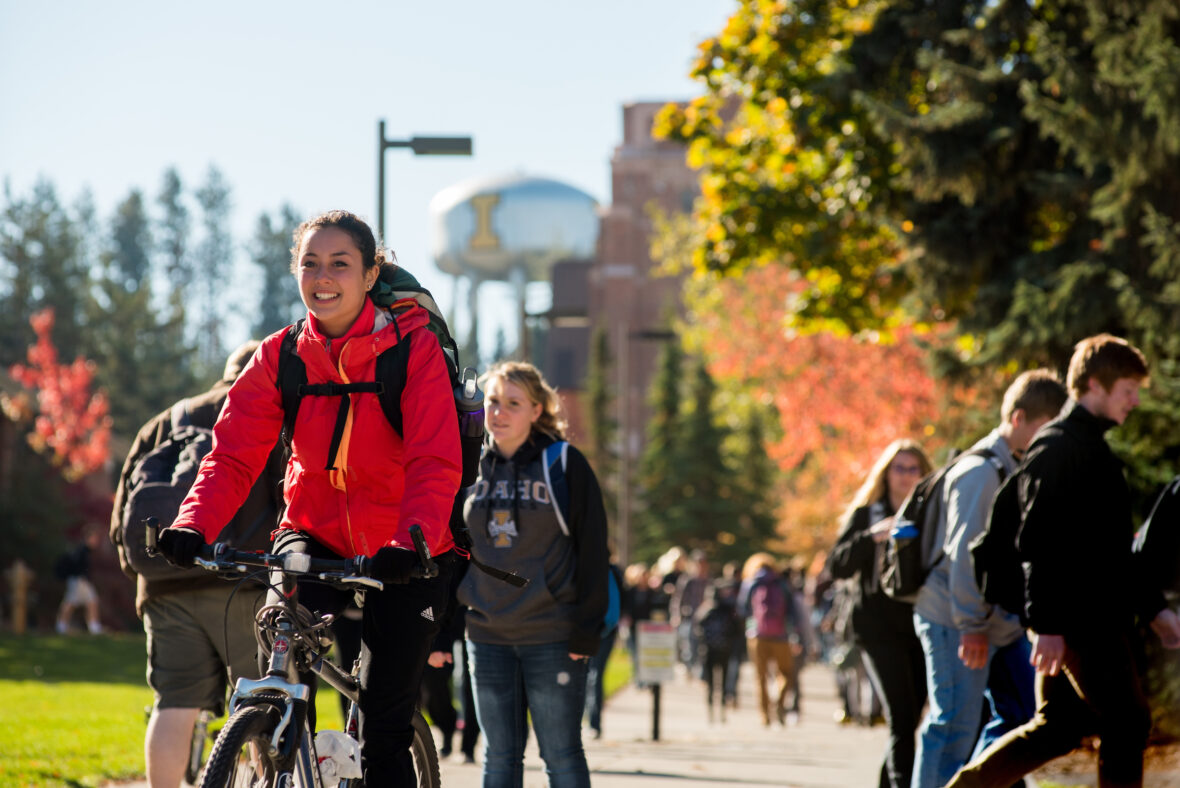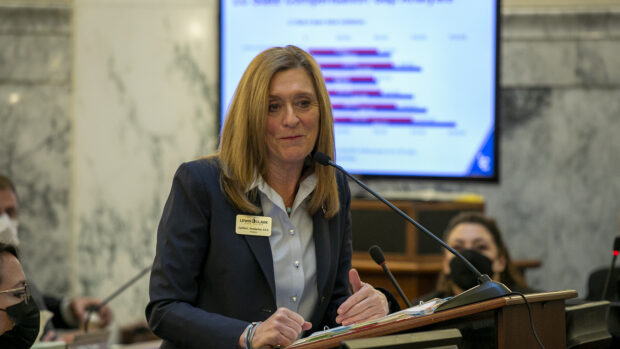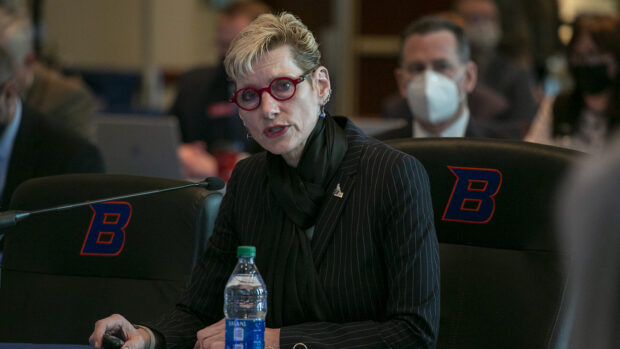
Idaho’s four-year schools touted plenty of big numbers this week.
And not without reason. Enrollment is generally moving in the right direction, continuing a post-pandemic rebound.

However, the numbers are messy, as numbers tend to be. The enrollment reports, turned into the State Board of Education in the past few days, include undergraduate and graduate students and high school students taking dual-credit classes. The bottom line mashes up the degree-seeking college students and the (potentially, but not automatically) college-bound high school students. Two important groups, of course, but two fundamentally different groups.
We’ll get back to that important but inconvenient reality in a bit. But in all fairness, let’s first give the four-year schools their moment to express a combination of optimism and relief — as Lewis-Clark State College President Cynthia Pemberton did Wednesday, during a State Board of Education meeting on the Lewiston campus.
“We are indeed digging out,” she said. “We are indeed making the climb.”
The climb — and encouraging news in one key area
Like many schools across the country, Idaho colleges have to dig out of a big ditch.
The COVID-19-driven enrollment decline — chronicled in an in-depth Idaho Education News series in June 2021 — was deep and almost entirely universal. Nearly every two- and four-year school in the state lost students from fall 2019 through spring 2021, more than 5,000 students in all.
During the pandemic, the colleges and universities struggled to attract the students that are already hard to recruit, such as first-generation college students and students from low-income households. What’s more, the colleges struggled to convince Idaho high school graduates to continue their education, and stay in Idaho to do it.
As a result, campus demographics shifted in another important and eye-opening way: Out-of-state students made up a growing share of overall enrollment. Nowhere was that trend more pronounced than at Boise State University; in 2021, for the first time in the school’s 89-year history, the majority of first-year students came from outside Idaho.

Boise State President Marlene Tromp has been trying to change this narrative for months; during her state of the university address in August, she hinted that a surge in in-state enrollment was coming. And her prediction panned out precisely: first-year, in-state enrollment grew by 314 students, a 20.7% increase. And yes, Idahoans once again make up the majority of Boise State’s freshman class.
“It’s incredible to see more Idahoans choosing to stay at home and attend Boise State University,” Tromp said in a news release Thursday.
This is an unqualified win for the Boise State admissions staff — which continues to market aggressively on the West Coast, but also was flummoxed when in-state students didn’t show up as expected during the pandemic.
- At the U of I, first-year, in-state enrollment increased by close to 10%, contributing to a record-shattering incoming class of 1,951 students.
- Lewis-Clark reported an 11% increase in first-year, in-state students.
- But Idaho State University saw a 8.9% decrease.
These in-state enrollment figures matter. Increases at three of the state’s four four-year schools suggest that Idaho’s dismal “go-on” rate is at least leveling off, or maybe even improving. In 2021, only 37% of high school graduates went straight to college — a number that has dropped 9 percentage points during the pandemic.
The 2022 go-on rate hasn’t been released.
But if there’s one enrollment trend to watch in Idaho higher education, the in-state numbers are a good place to start. In-state recruiting incorporates all of the other recruiting challenges facing Idaho higher education: bringing in first-generation students, low-income students, rural students and students of color.
The complicated bottom line
If you want the soundbite, all of the four-year schools gained ground this fall.
- Boise State: Total enrollment came in at 26,162, up 1.3%.
- Idaho State: Enrollment came in at 12,319, a 1.3% increase.
- U of I: Enrollment totaled 11,507, up 1.8%.
- Lewis-Clark: The headcount totaled 3,783, up 2%.
That’s the simple answer — and it’s encouraging. But things get complicated quickly.
At Boise State, an increase in dual-credit enrollment accounts for the overall increase. The number of degree-seeking students — undergrads and grad students attending classes on the state’s largest campus — actually fell by 1.6%.
It’s a similar story at Lewis-Clark. Strip the dual-credit students out of the equation, and the fall headcount actually dropped by 1.2%.
On-campus, degree-seeking enrollment increased at U of I and Idaho State, irrespective of dual credit enrollment.
What’s happening here? A lot of things.
More than two years out from the pandemic, the return to campus appears spotty. Some students certainly sat out college during the pandemic — because they were uneasy about pivoting from face-to-face to virtual learning, or because they were fearful of COVID-19. Now, some of them have decided it’s time to enroll. But other would-be students are surely sitting things out, likely for a different set of reasons: such as fears about inflation, or the draw of a $15-an-hour job in a robust labor market.
And keep in mind, none of those economic factors affect dual credit enrollment.
By and large, degree-seeking students and their parents have to shell out money, and take out loans, to pay for college. It’s a family financial commitment.
But in Idaho, the state pays high school kids to take dual credit. It’s Idaho’s higher education futures market. By giving high schoolers $4,125 that they can put into college classes, the state hopes to draw these students onto a college campus someday.
The degree-seeking student cohort and the dual-credit student cohort really don’t have much in common — aside from the fact that both groups of students take college classes in Idaho. And so, the enrollment reports lump them all together.
The bottom line looks better this fall. But as with most things statistical, it’s complicated.
Each week, Kevin Richert writes an analysis on education policy and education politics. Look for it every Thursday.
